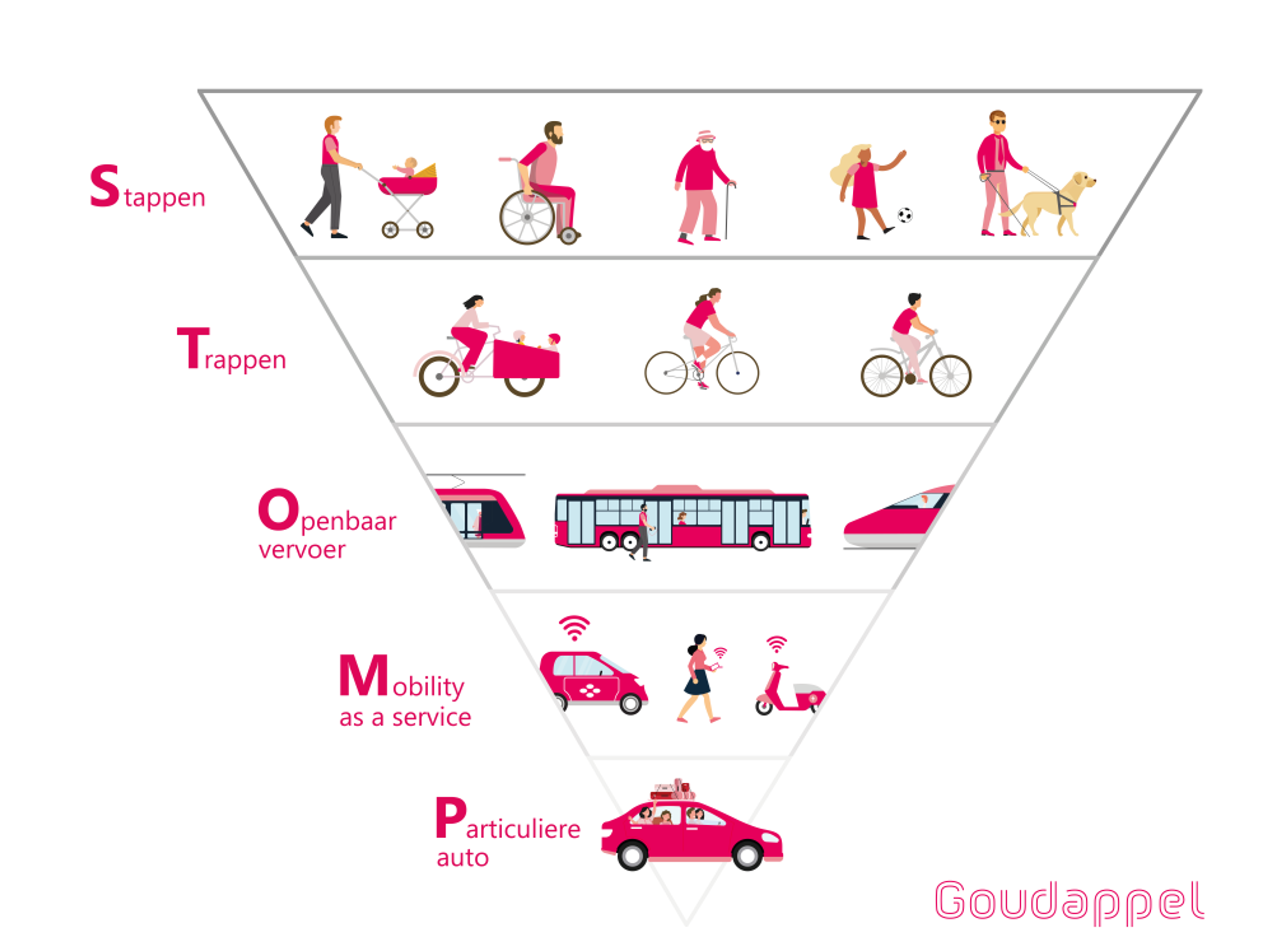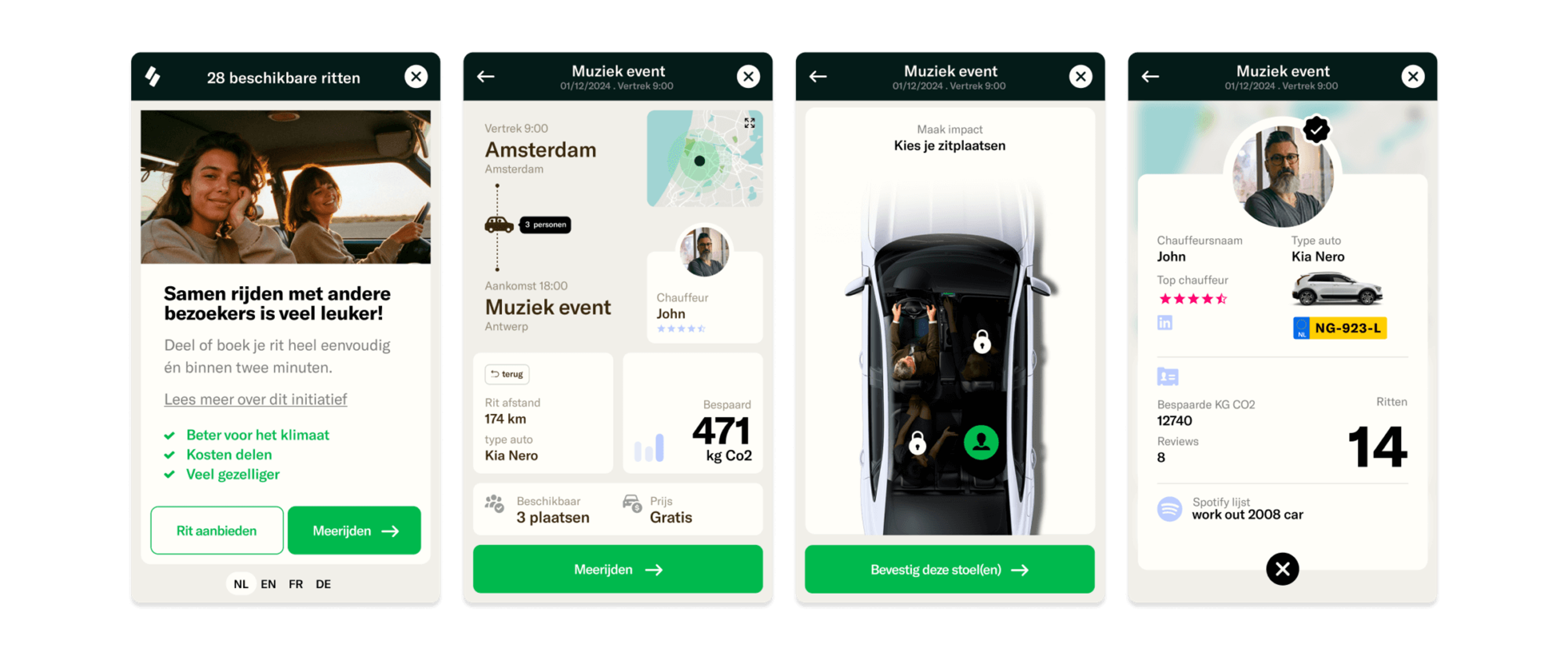
Mobility plays a crucial role in the culture sector's overall carbon emissions. Visitors, employees, suppliers and artists often travel long distances to participate or work at an event. By making smart transportation choices, organizers can significantly reduce their carbon footprint.
This article provides insight into sustainable mobility strategies and tools to encourage sustainable choices.
Laws and regulations
Sustainable mobility is increasingly encouraged by national and European legislation. For example, the Dutch government encourages zero-emission transportation through subsidies and regulations, such as the introduction of zero-emission zones in urban areas. There are also initiatives such as the requirement for large employers to draw up mobility plans and the greening of public transport. European directives, such as the Fit for 55 package, place additional emphasis on the transition to more sustainable transportation and reducing carbon emissions in the mobility sector.

Sustainable use of materials and water
With a growing world population and increasing demand for products and resources, sustainable materials and water management is becoming an increasingly important issue. This article offers insight into strategies, measurement tools and examples for more sustainable material and water use.
The STOMP principle
There are several strategies and tools for making mobility more sustainable. One of the most effective is the STOMP ordering principle, developed in the 1980s and 1990s by Dr. Jan Korsmit. STOMP stands for Steps, Steps, Public Transportation, MaaS (Mobility as a Service) and Private Car. This model encourages a hierarchical approach that prioritizes the most sustainable modes of transportation and sets up infrastructure to make sustainable choices more attractive.

Sustainable mobility
Whether it's visitors, employees, suppliers or artists, with targeted strategies, cultural organizations can significantly reduce CO₂ emissions from mobility.
Movement in map
To create a sustainable mobility plan, it is important to first analyze how visitors as well as staff and volunteers travel. This can be done through surveys asking visitors and employees about their means of transportation and travel distance, analyzing ticket data to determine origin locations, and zip code analyses to understand the distribution of visitors. For employees and volunteers, internal communication can play a role, for example, by including questions about mobility in the intake process for new employees. In larger organizations, a periodic survey can help understand travel behavior, modes of transportation and potential areas for improvement.
💡 Tip: Implement EcoPassenger, a tool that compares different modes of transportation for CO₂ emissions and energy consumption, so you can make the most sustainable choice.
1. Visitors
(Cultural) organizations can encourage sustainable travel options by offering discounts or incentives for public transport use, organizing special carpool promotions with tools such as Slinger, and by facilitating sufficient bicycle parking and bicycle rental options. A good example is the Lowlands festival, which has partnered with NS and bus companies to offer combined train tickets and shuttle buses.
💡 Tip: Use Slinger, a platform that encourages carpooling and helps visitors travel together sustainably to the event.

Communication Strategy
Offering alone is not enough - visitors must become enthusiastic about choosing sustainable travel options. A strong communication strategy makes all the difference here.
- Clear and accessible information - Make it easy for visitors to make sustainable travel choices by sharing clear and accessible info via the website and social media. Again, follow the STOMP principle: start with walking and cycling as the most sustainable options, followed by public transportation, shared mobility and finally the private car.
- Reward sustainable choices - Motivate visitors by offering them discounts, sustainable goodie bags or exclusive benefits at the event.
- Playful awareness - Encourage engagement with a CO₂ calculator or an interactive quiz on sustainable mobility.
💡 Tip: Help visitors make a more sustainable choice by providing information about event start and end times, connecting public transportation options and/or carpool options.

2. Employees
The easier and more attractive sustainable travel options are, the faster employees will embrace them. So to promote sustainable mobility, it is essential to offer the right facilities. Consider, for example:
- Bicycle Plans and Leased Bikes - Encourage bicycling as a primary mode of transportation with lease incentives, tax breaks and sufficient bicycle parking spaces.
- Electric car charging stations - Provide sufficient charging facilities at workplaces and event venues to make electric driving more attractive.
- Share cars and shuttles - Offer employees access to electric share cars and shuttle services from public transport hubs. This not only reduces carbon emissions, but also traffic congestion and parking problems.

Securing in policy
Sustainable mobility can be structurally embedded in the organization through clear and attractive policies. For example, a travel allowance can be linked to sustainable choices, encouraging employees to use public transport or bicycles more often. Encouraging home working days and flexible working hours also helps reduce the impact of commuting. Finally, it is important to explicitly include sustainable travel policies in contracts and handbooks so that it becomes a permanent part of the organizational culture and employees feel actively involved.

Develop strategy on sustainability
There is also a growing urgency in the cultural sector to contribute to a more sustainable future. But how do you tackle this concretely? In this article we look at developing a strategy on sustainability, the resources available to do this and where to find support to actually implement your plans.
3. Suppliers
At festivals and temporary events, transportation of materials plays a major role in CO₂ emissions. This can be done smarter and more sustainably. Both temporary events and permanent venues can become more sustainable by using emission-free construction equipment, such as electric and hydrogen machines, which drastically reduces emissions from construction activities. Smart logistics, such as efficient route planning, bundled deliveries and minimizing transportation miles, not only reduce emissions but also save costs.
Collaboration with local suppliers also strengthens the local economy and makes events greener. Permanent venues can take additional steps by capitalizing on zero-emission transport zones, as in Nijmegen, and using tools such as Mobility Analyst to monitor emissions and make them more sustainable.
4. Artists
Artists often travel internationally and their mobility has a significant ecological impact. To reduce this impact, several strategies can be employed.
- Sustainable travel arrangements - Agree on sustainable travel options, with artists using trains or electric vehicles instead of flying whenever possible.
- Conscious programming - Schedule performances in a way that facilitates more sustainable travel, such as by clustering tours by region.
- CO₂ offsets - Offset emissions from air travel through recognized programs or work with sustainable initiatives, such as the Gold Standard or VCS (Verified Carbon Standard), which guarantee that CO₂ offset projects are actually making an impact.
💡 Reading tip: Coldplay developed an ambitious strategy to make tours carbon neutral with electric transport and renewable energy, cutting their emissions in half!

Sustainable catering
Food and drink are essential at events, but their impact on the environment is significant. By choosing plant-based and local foods, smart packaging and less food waste, festivals and cultural institutions can drastically reduce their impact.